
Atomic athlete Chris Rubens | Photo: Max Ritter
Now nearly two decades into his career as a professional skier, Chris Rubens knows a thing or two about ski design. These days, Rubens lives in the epicenter of Canadian powder skiing - a little town you might have heard of called Revelstoke. With several lifetime’s worth of ski terrain just outside his back door, Rubens has gotten to know these mountains better than most. While heli and sled-access skiing was a focus for much of his career, he has recently doubled down on accessing big lines and the deepest snow by ski touring. For him, it’s a more sustainable way to continue his career, and it’s just plain old fun to go for a walk in the woods with friends.
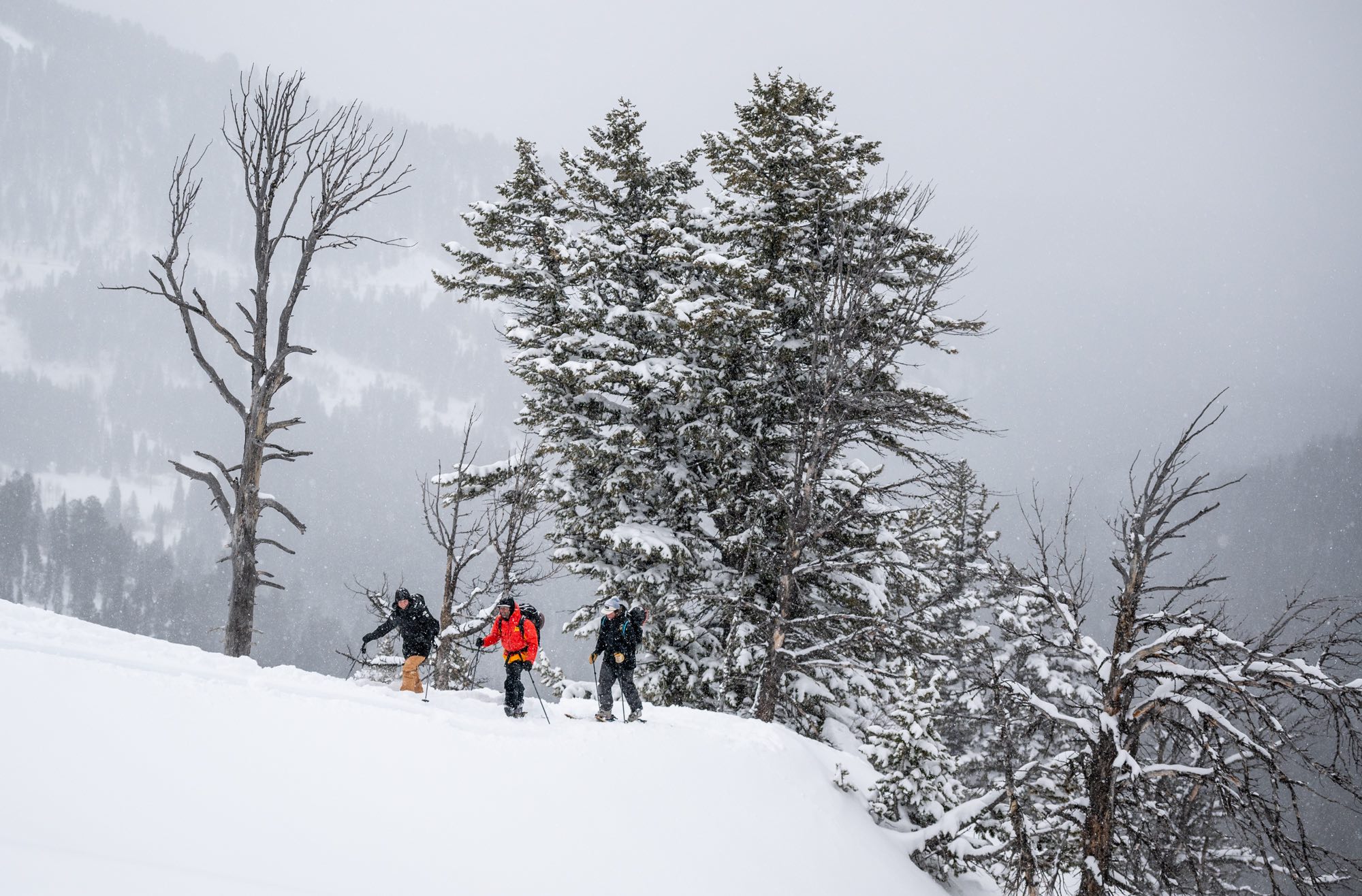
Walk in the woods with Janelle Yip, Chris Rubens and Tim Durtschi. | Photo: Max Ritter
The last few years have brought about a slew of changes for Rubens - when he’s not out hunting foot-powered turns, he operates First Light Farm with his partner Jesse and has turned his attention to fatherhood. He also recently joined the Atomic Skis family, where he played a key role in developing the all-new Atomic Backland 109 ski. Completely redesigned from the existing Backland skis, it’s a high-tech newschool powder-hunting weapon designed for the big midwinter days in the mountains.
Rubens shared some of his philosophy around the new skis while visiting the Tetons earlier this year. We got out for a quick early-season ski tour on Teton Pass with nearly a foot of fresh snow blanketing our favorite tree runs - nothing like a skin track chat to talk about ski tech!
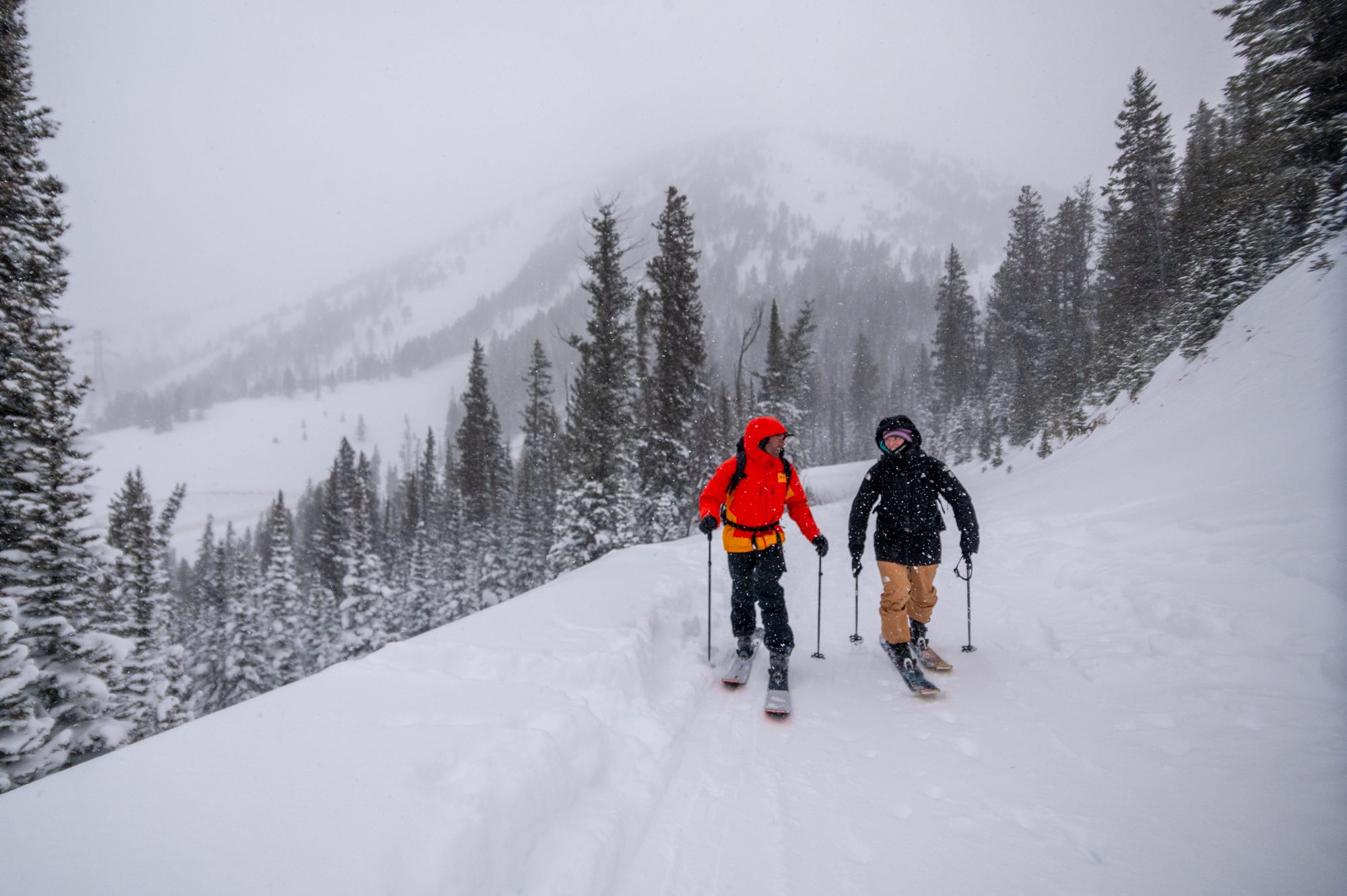
Chris and Janelle talk ski tech on the trail. | Photo: Max Ritter
The Tech:
In order to talk about the new Backland 109, Rubens reminded us to look back at its earlier generations. The existing Backland 107 was a directional freeride touring ski designed for hard-charging skiing in variable terrain. The old ski was designed around a stiff flex and very little tail rocker, making it feel locked into turns and very powerful. When Rubens set about redesigning the new Backland 109, the biggest point of change was in the tail.

Photo: Max Ritter
To him, skiing powder is a playful activity - watching him ski showcases his affinity for bouncing between turns, airing pillows, and slashing in deep spots, with a telltale grin on his face. To ensure maximum playfulness in the new ski, he took some design cues from the Bent family, and gave the new Backland 109 a more aggressively rockered tail.
In short, it’s still a directional ski - if you want to land switch in pow, the Bent 110 or Bent 120 might be a better option - but the more pronounced tail rocker promises maximum releasability in deep snow.
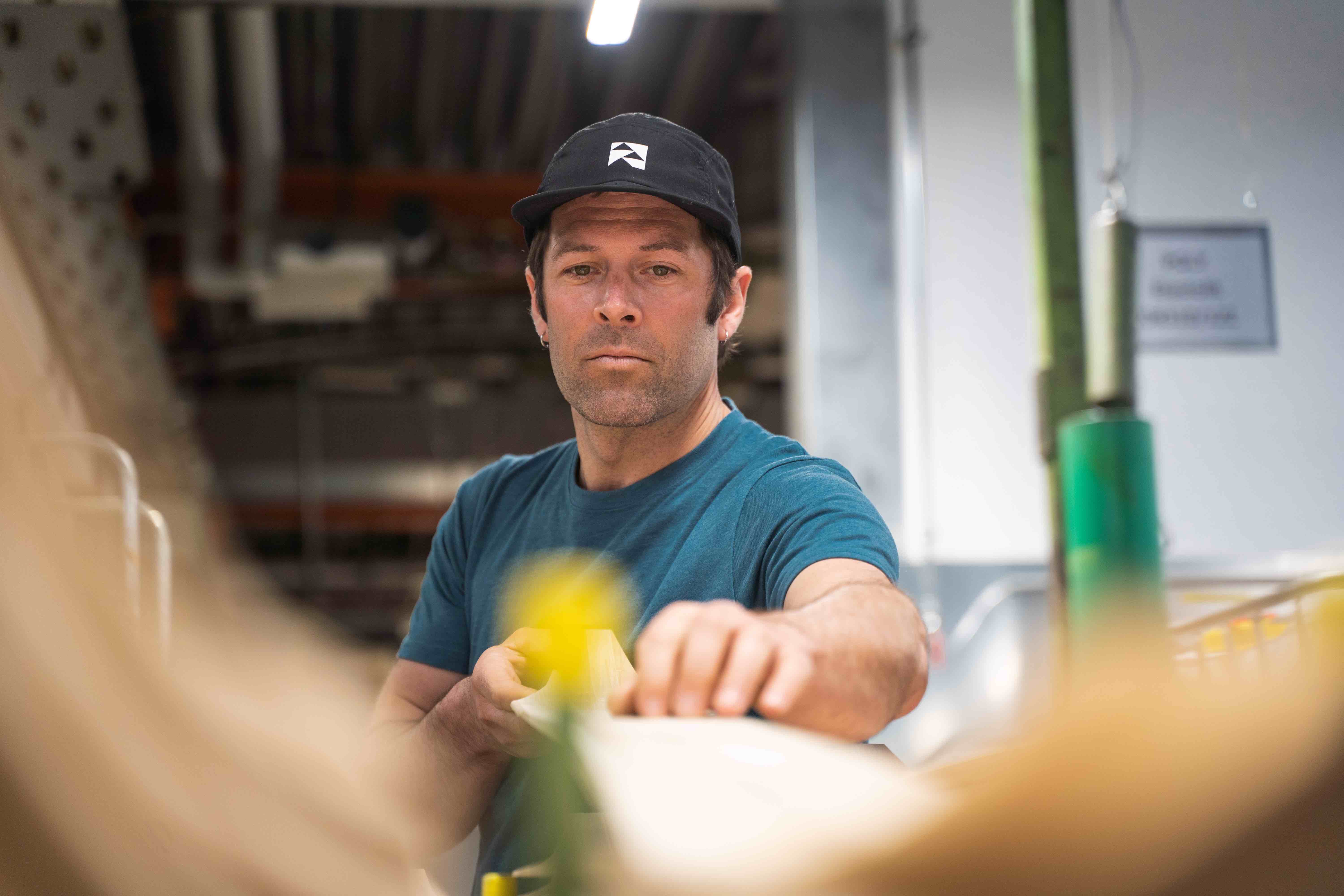
Photo: Noah Wallace
The ski’s core construction has also changed, with Atomic making the switch back to poplar and karuba wood inside to add to the playfulness factor. Rubens also softened up the ski’s flex slightly in the tip and tail to allow it to track better in variable snow but still retain stability at speed. That, paired with the shortened turning radius should give riders the opportunity to vary their turn shapes, release the tails on command and slash their way to powder heaven.
Up front, the tip features Atomic’s signature HRZN Tech 3D tip, which adds floatation to the tips and again increases the playful feeling. The tail features a shallow cutout for climbing skins.
Rubens’ Take:
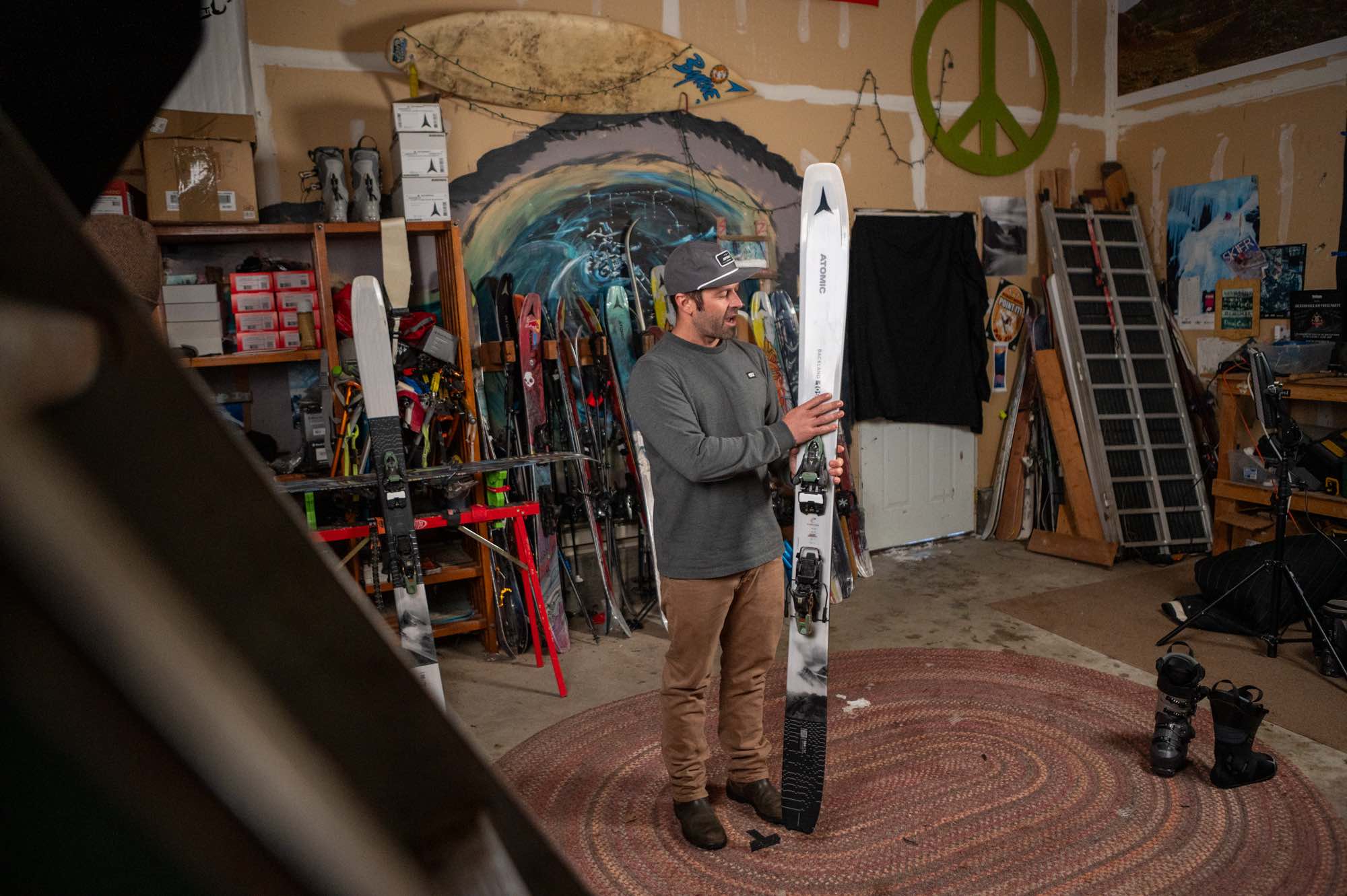
Photo: Max Ritter
Can you briefly describe your motivation to design the new Backland 109? How does it reflect your current approach to backcountry skiing?
The opportunity to design the Backland 109 was a big part of my decision to come to Atomic. The chance to design a freeride backcountry ski that was also the start of the company's work on making skis with less carbon footprint was everything I have been working towards.
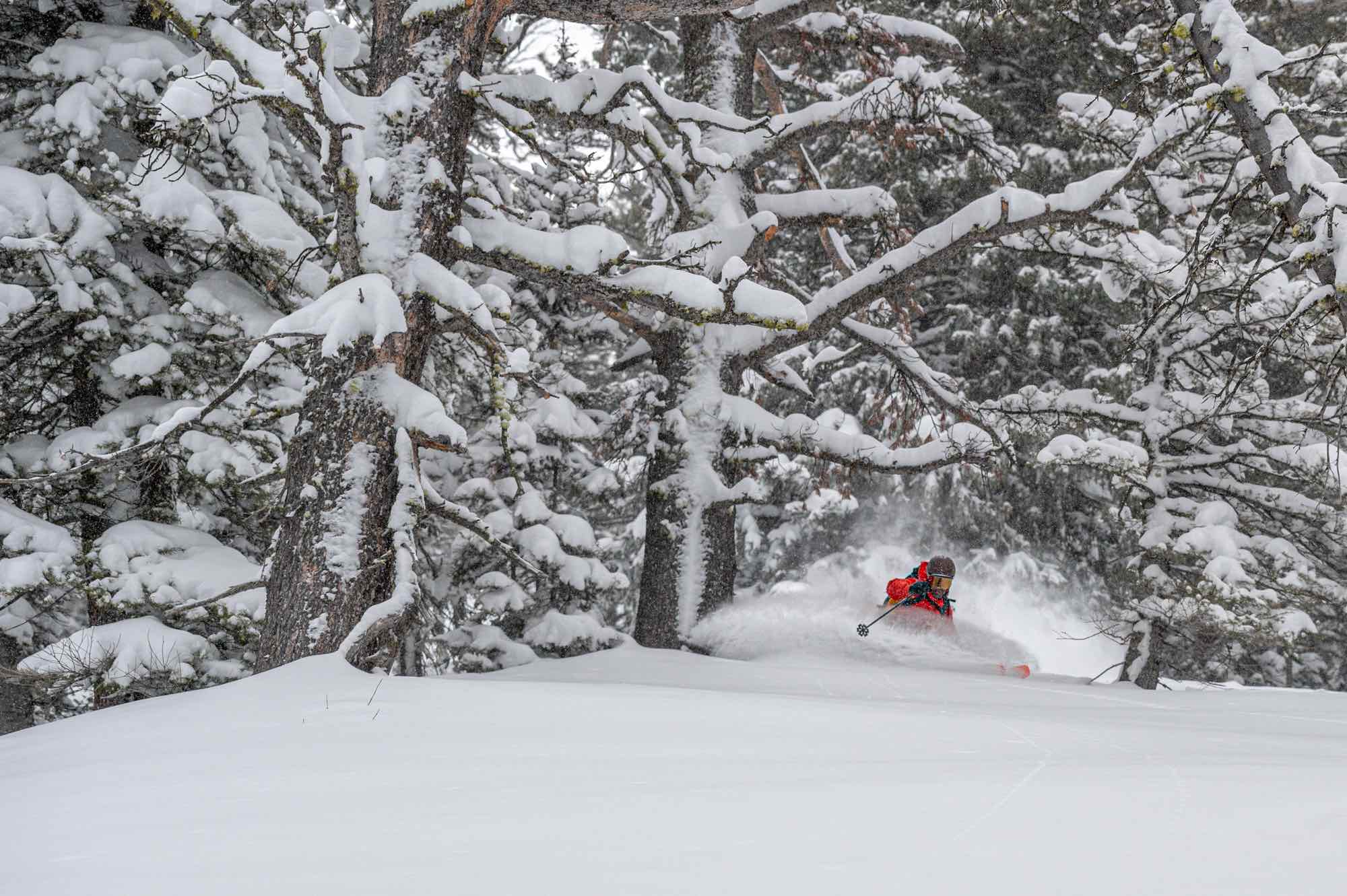
Photo: Max Ritter
Regarding ski design, the need for a freeride backcountry ski was more apparent in the testing process. I found competitor's skis I thought would be comparable or skis that I liked. When I went into the backcountry-specific side, skis got very traditional and not precisely the fun skis I like to ski on. On the other hand, you have skis like the Bentchetler, an excellent, playful, surfy ski with a huge twin tip that’s really fun to ride but can be cumbersome when you’re ski touring.
It became clear early on that we needed to make a ski that had a traditional tail but skied more like the Bentchetler. A lot of this comes from making a tail that is more traditional but making a gradual early rise tail that is there when you want it, but you can also smear a turn and shut it down. With a 109mm waist, it can ski powder on the deepest days but also perform great on hardpack. Putting a large shovel on the tip and utilizing the HRZN tech tip makes this front want to float and plane on top of the snow.
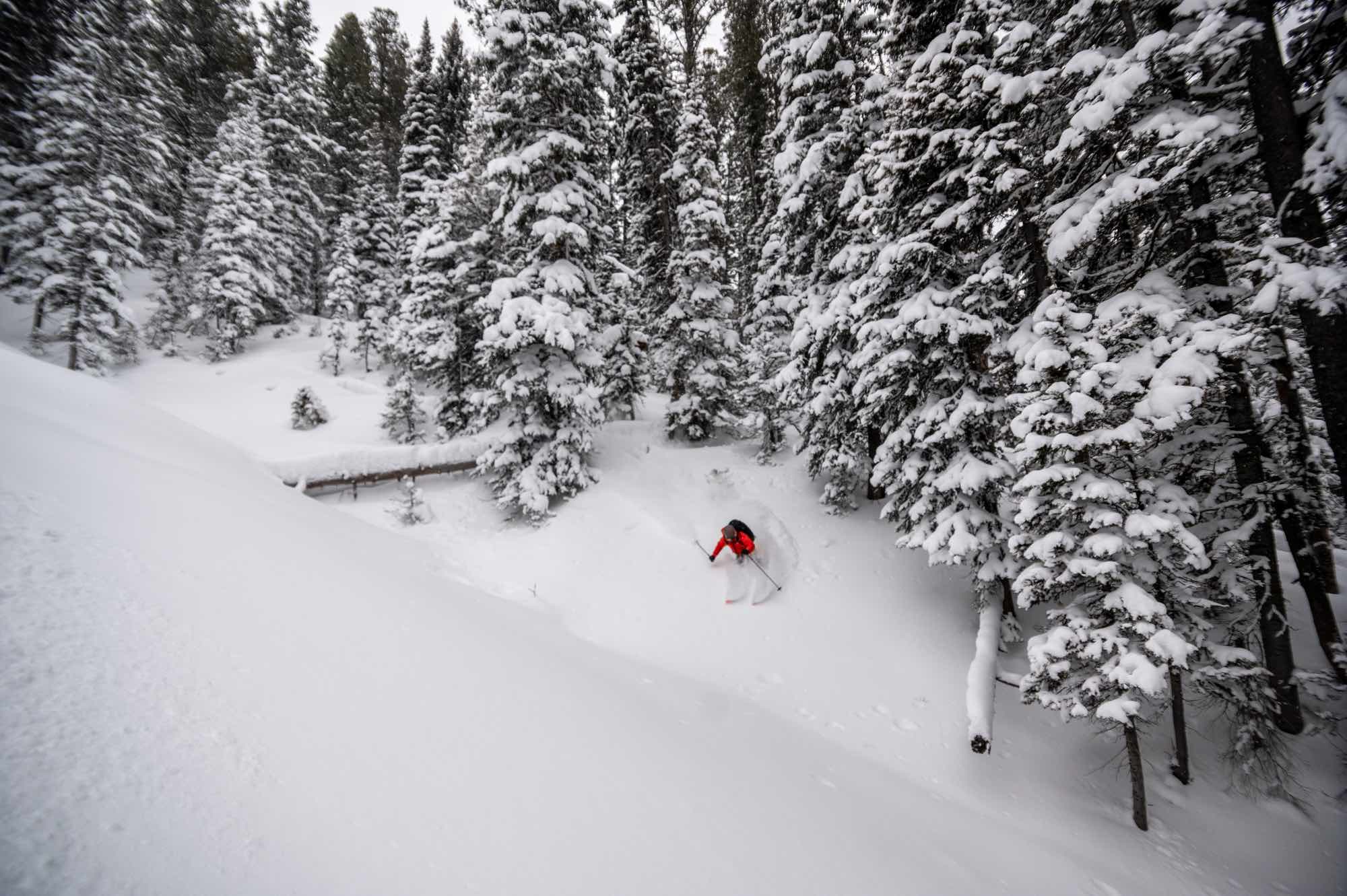
Photo: Max Ritter
Overall, this ski reflects my exact approach to skiing these days. I'm conscious of my carbon footprint and think this ski is a great start towards more sustainable practices. My ski world these days is mostly ski touring, with both big and small days. I primarily seek out freeride lines, powder and pillows, so I want a ski that is fun, playful and shreds hard. The biggest bonus to me is that the ski is exceptionally lightweight but doesn't have that tingy feel of a lightweight ski, and I have loved having a proper tail on a ski that still releases and enables smear turns. To me, this is a backcountry ski quiver killer.
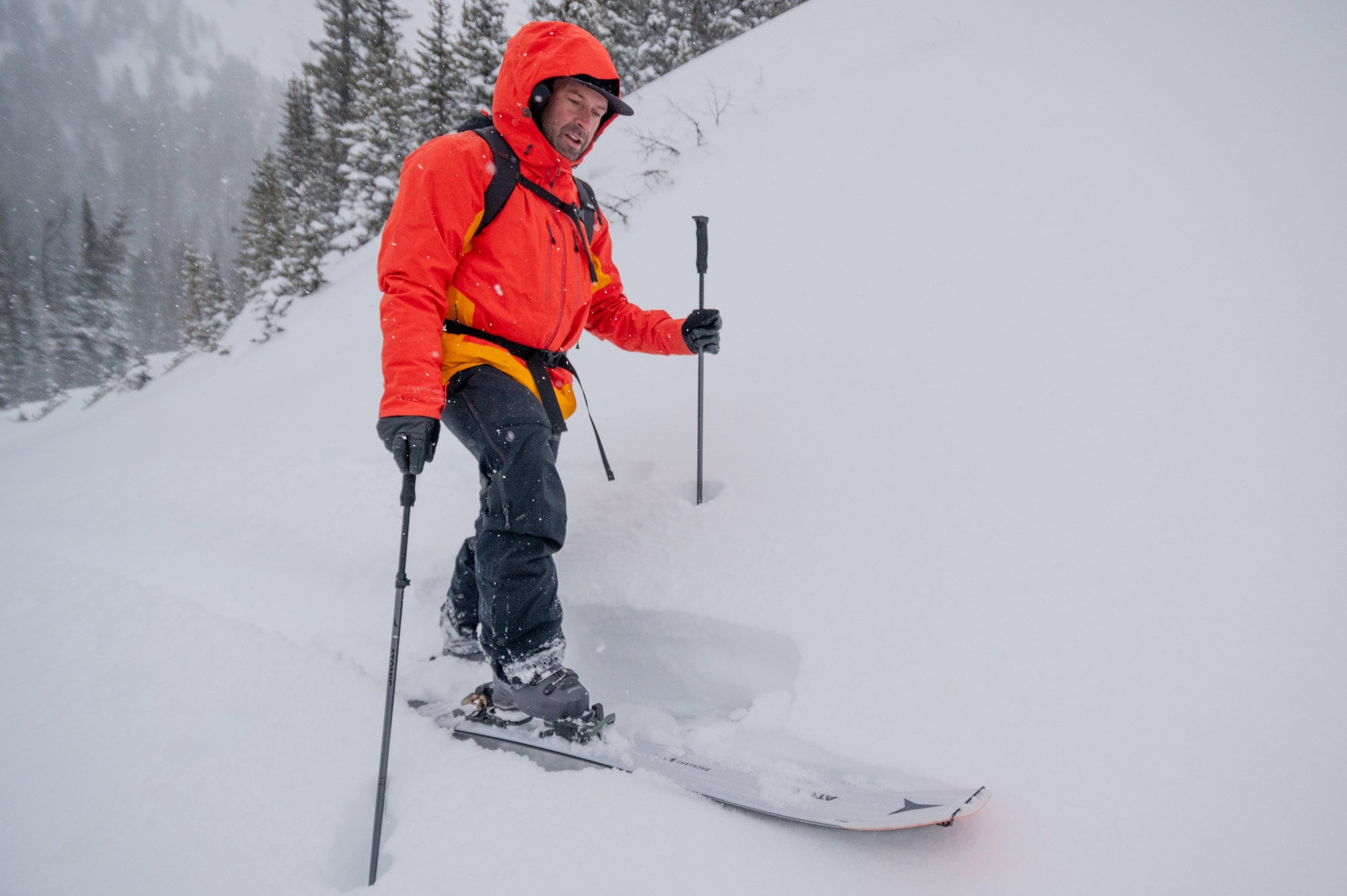
Photo: Max Ritter
What are the most important things you look for in a ski? How are those represented in the new design?
For me, it is all about the rocker profile matched with the side cut. I have found that bringing side cuts closer to the binding makes for a ski that turns well on harder snow but doesn't hook when in crusty conditions. With the rocker profile, sometimes less is more, and having long, gradual curves makes a nice balance between powder and hardpack. This also differentiates between a surfy, fun and playful ski and a more traditional ski that doesn't like to smear. I have been a big fan of lightweight tips and tails to keep the swing weight down on the skis, and the HRZN Tech does a great job of this while helping with float. Over the years, we have tried so many different materials in the ski's core, but we are back to just old-fashioned wood. The poplar/karuba core with an ash inlay for the binding mount is a huge key to reducing CO2 emissions by 26 percent and making a really lightweight ski still ski so well.
What's changed from the old model? You mentioned the new tail shape...but what's different inside?
The old Backland 107 felt more like a charging resort ski. This was demonstrated by a bunch of the Atomic team using it for Freeride World Tour events. That style of ski has moved into Atomic’s Maverick/Maven category, and we made the new Backland more backcountry-specific. We bumped up the waist width to 109.5mm and made the ski a little less traditional and more fun and playful. That being said, this new ski also really loves to charge and performs excellent at all speeds and conditions. People who loved the Backland 107 will really enjoy this new design.
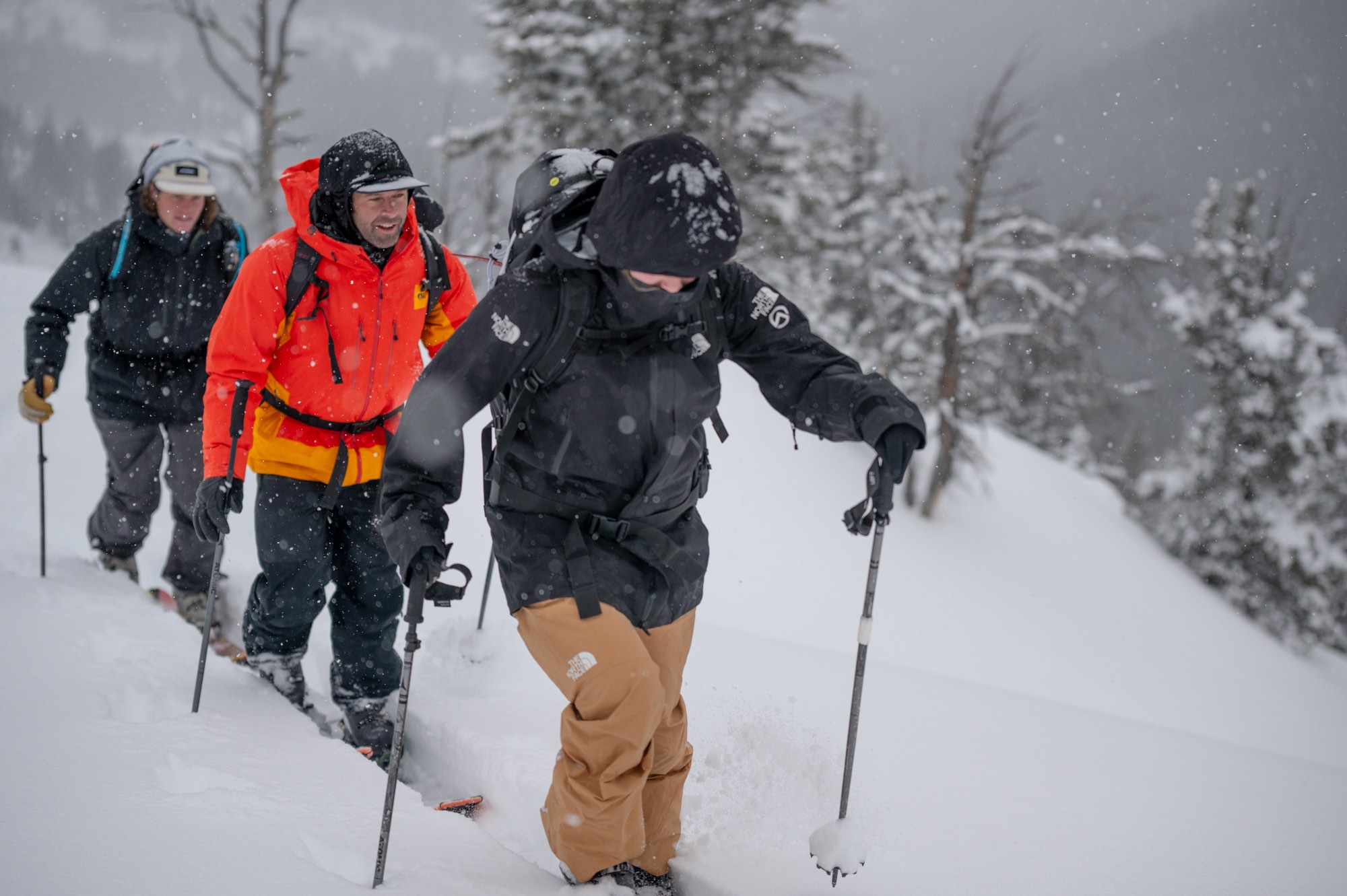
Tim Durtschi, Chris Rubens and Janelle Yip love going up ... and love the down even more. | Photo: Max Ritter
In your opinion, who is this ski for? Other than yourself, obviously!
I certainly designed this ski with the average backcountry user in mind. It is meant to be an easy, fun, playful ski, in any condition. I was looking for a one-ski quiver killer ski, and I think it does just that. It floats great in deep powder but still performs great on hardpack. This is a ski for people who love going up but want the down to be just as fun. Let's just say that your ski won't hold you back on the way down. Whether you are an intermediate skier or an expert, this ski likes to do it all.
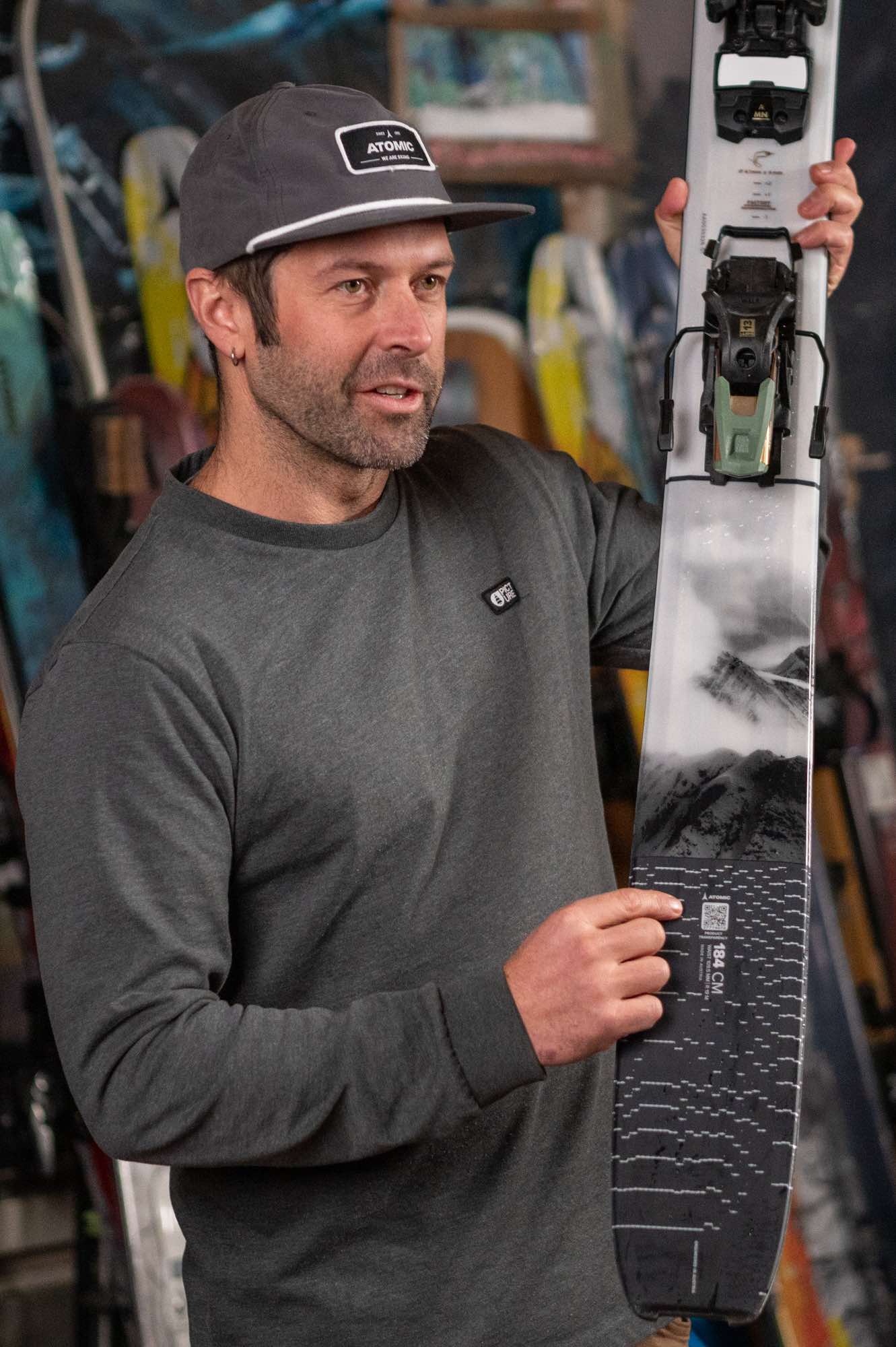
Close up of the artwork on the tail. | Photo: Max Ritter
What's the story behind the image on the tail?
My good friend and photographer Bruno Long took the image on the tail. It is taken on Roger’s Pass, BC, a mecca for ski touring in North America. This is the epicenter of what this ski is designed for: big vert ski touring days with some of the best freeride terrain in the world. The people that come here want their gear to work at the highest level. Being conscious of weight on the uphill but downhill performance is of the utmost importance. The mountain in the photo is Cheops, looking back towards the Lily Glacier and the Dome. If you look closely, you will see a group of skiers on the top of Cheops about to drop into the dramatic north-facing couloir.
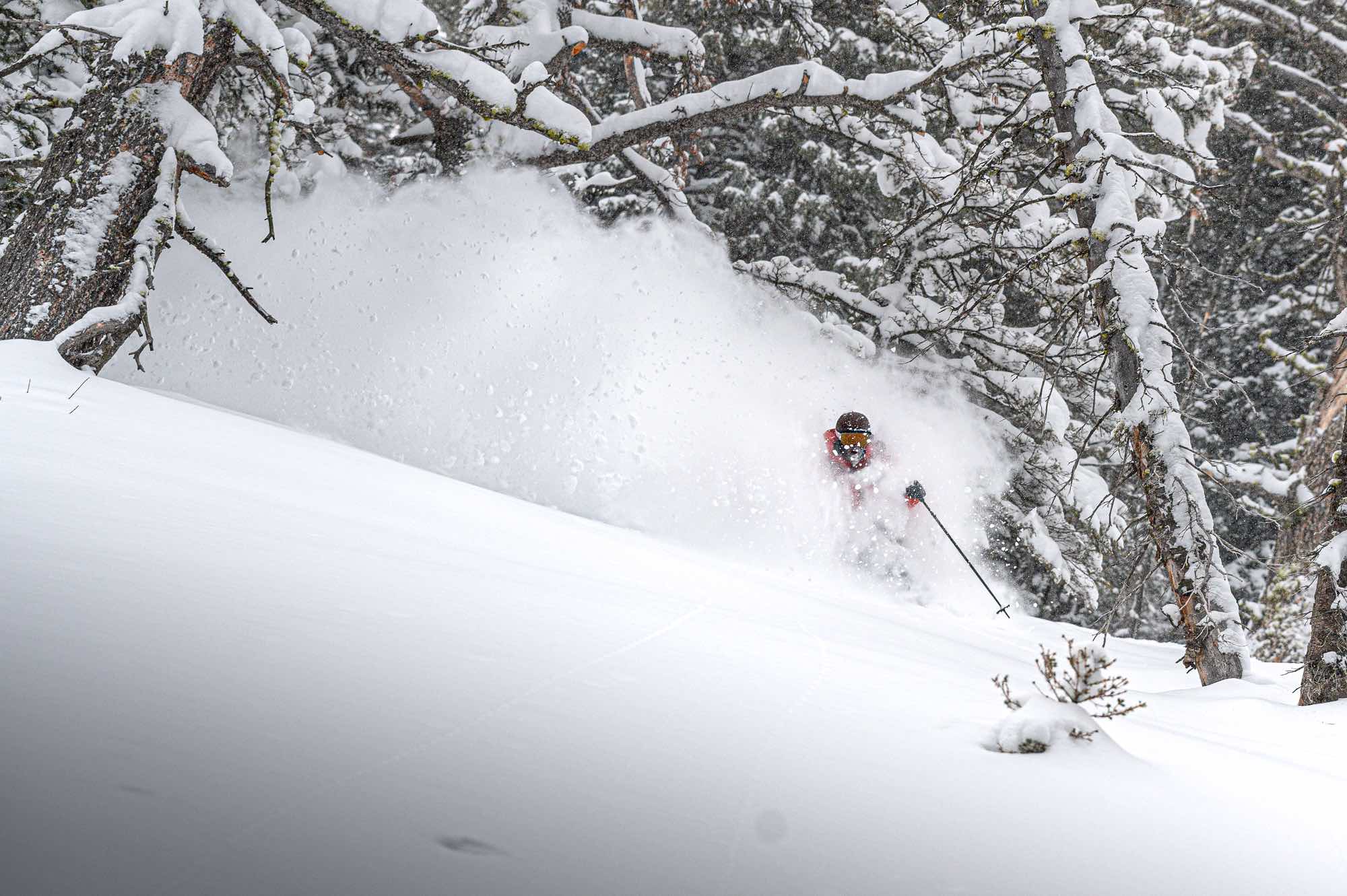
Rubens having a grand ol' time. | Photo: Max Ritter
Will this ski make me a better skier?
A wise man once said "It is the wizard, not the wand." Well, we all know there is some truth in that, but equipment makes a huge difference, especially when it comes to backcountry skiing. As a totally biased opinion, I do believe these skis will make backcountry skiing easier, better and way more fun. At the end of the day there is only one way to find out and try them.


